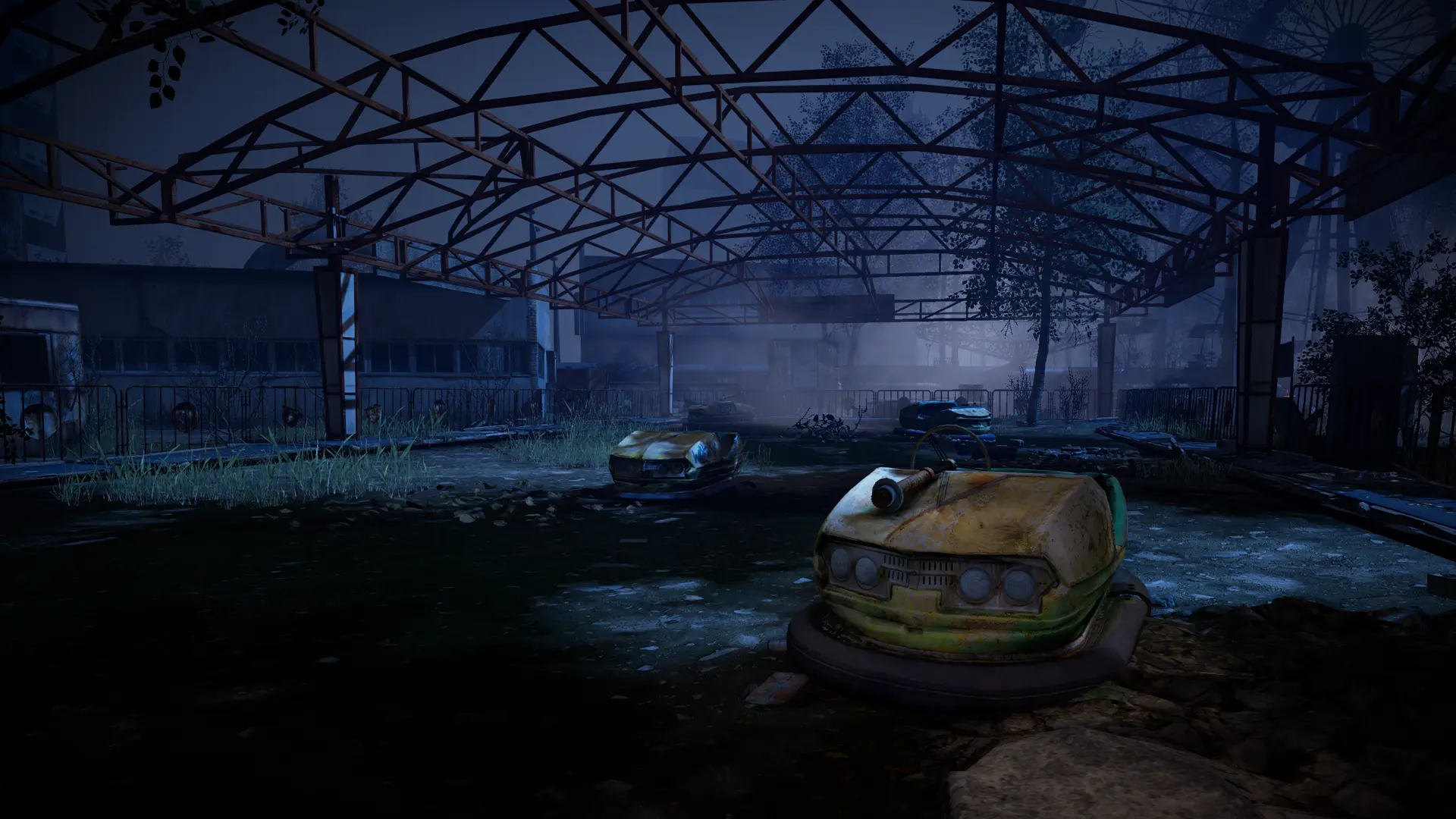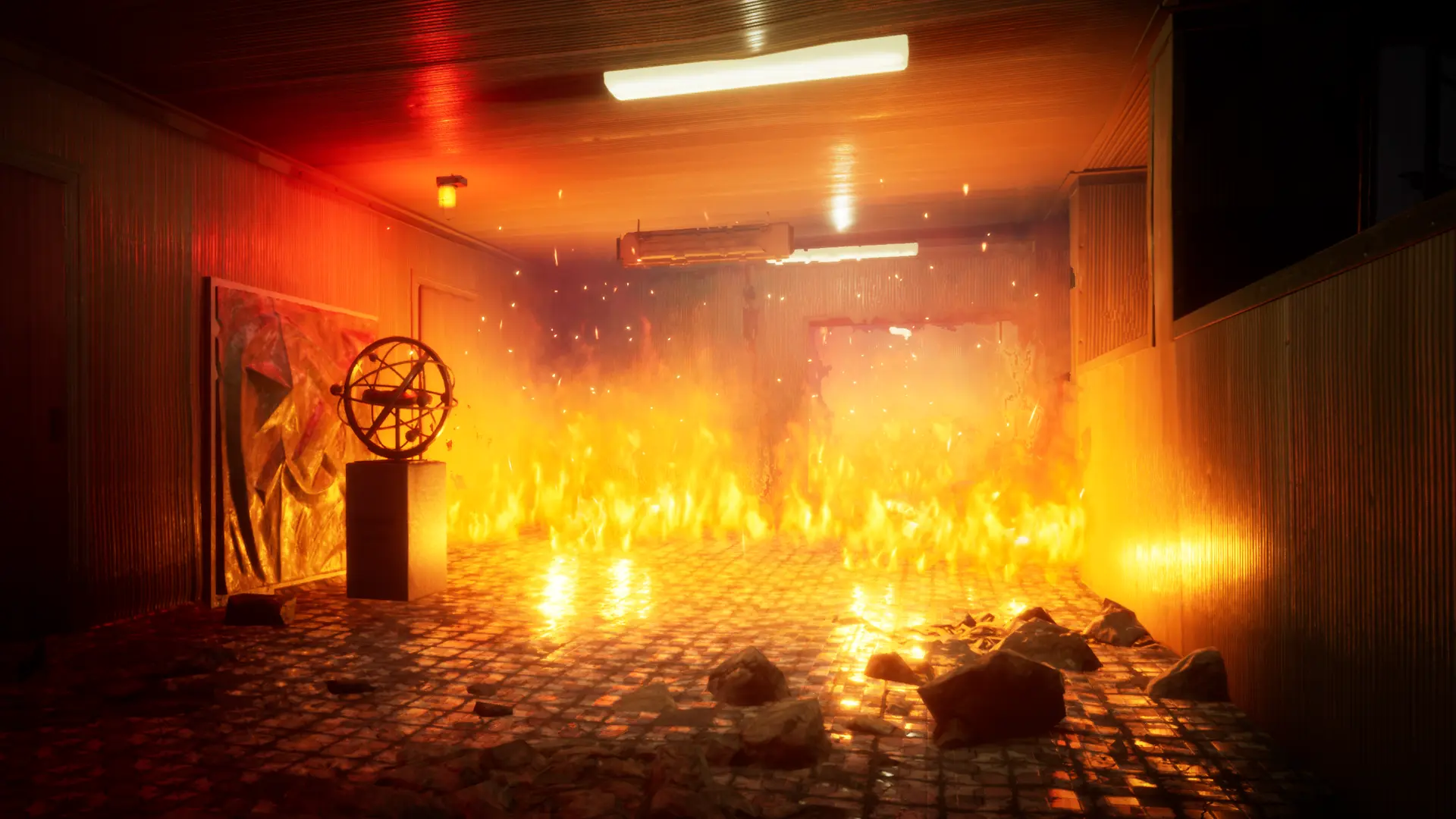
Listen to The VRverse Podcast


Review: Chernobyl Again
- September 16, 2024
- 9:22 pm
- PCVR
The idea of visiting Chernobyl and nuclear exclusion zones is something that has been tackled before in VR, both educational or the idea of surviving the altered landscape. However, when Chernobyl Again’s premise was trying to stop the reactor meltdown, I was certainly interested in this idea and take on the Chernobyl disaster.

Release Date: September 12th 2024
Developer: Vimagineo Sp. z o.o.
Publisher: Vimagineo Sp. z o.o.
Price: US$29.99 / CA$38.99 / €28,99 / £24.99
Reviewed On: DPVR E4 Black
* Access Provided For Review *
Can You Save Pripyat?
You play as Olena Ponomarenko, a child of gifted nuclear physicists, who would do anything to see her parents again. Your goal is go back in time and stop the reactor meltdown in Pripyat, Ukraine. Meaning as a scientist, you find a way to time travel but, is it possible to complete you goal?
Some Puzzling Choices
At it’s heart Chernobyl Again is a puzzle game, which will see you time travelling between dates before and after the disaster. In each location be it in the reactor, outside or back at a safe house, you will solve some puzzles and then travel to a different date – as the games story unfolds via dialogue between the characters. Once you have completed you goals in each date you visit, you will open you suit case (which includes what is needed to time travel) and go to the co-ordinates and date given.
One thing I appreciated with the puzzles, was they weren’t overly complex and hints start to dropped in the dialogue if you are taking your time. This means the story, which for me is a very strong element of the game never gets held up. With the story and pacing of the game I think this was a very solid choice – and my first playthrough of the game took me around three and a half hours.
However, this game is slowed by some design choices, where the amount of VR interaction in the puzzles, like having to undo screws with a wrench and even turn the fuses after you insert them is fantastic for immersion– it’s all a bit clunky. Having so many manual parts to pump, turn and mess with when time travelling should be a standout element but, the general clunkiness makes the precise positioning they need tricky at times.
This is then mixed with an inventory system, although wanting to feel futuristic felt very left behind compared to a lot of other games. Everything is stored in your sci-fi watch, which also includes yours navigation system, memories (you find around the maps) and objectives on top of you inventory. You activate this buy pressing down and holding the face of the watch with your opposite hand then a menu system pops-up, which leaves you navigating menus more than you would want in VR. I also found sometimes this becomes very cumbersome, as the watch would snap when pressing it in, meaning by the time I had chance to move my hand away it would select an option I didn’t want – meaning backing out and messing about in menus, which sort of ruins some of the flow and pace of the game.
Something Old, Something New
Personally I found the overall look of the game a bit of mixed bag, some of the scenery and areas looked great but then other models and textures looked flat and worse. I am not sure whether the PC version has been held back with the development on the Quest in some areas – as parts that looked off, would be perfectly suitable for the standalone version of the game. But, saying this there wasn’t any point I was dragged out of my immersion in the game when coming across these (also, please remember I look for things like this for my review).
One thing I really enjoyed is, the idea of time travelling allowed me to visit places before and after the reactor explosion. Visiting the reactor before the explosion and areas after the explosion really allowed the team to portray these locations and dates perfectly and keep the look of the game feeling fresh.
Sound-wise they team have done a good job of setting the atmosphere and with the voice acting, to make sure your immersion is not broken via the audio. My only issue with the audio was on the aforementioned audio queue hints, as if you don’t figure it out the same line will just kept getting repeated – which as with any other game with repeated audio line this becomes a little annoying.
Comfort
| Posture | Supported |
|---|---|
| Standing mode | Yes |
| Seated Mode | Yes |
| Artificial Crouch | Yes |
| Real Crouch | Yes |
| Movement | Supported |
| Smooth Locomotion | Yes |
| - Adjustable Speed | No |
| Teleport | Yes |
| Blinders/Vignette | Yes |
| - Adjustable Strength | No |
| Head-based | Yes |
| Controller-based | Yes |
| Dominant Hand Switcher | Yes |
| Turning | Supported |
| Smooth Turning | Yes |
| - Adjustable Speed | Yes |
| Snap Turning | Yes |
| - Adjustable increments | Yes |
| Input | Supported |
| Tracked Controllers | Yes |
| Hand Tracking | N/A |
| Gamepad | No |
The Verdict

Chernobyl Again certainly has an interesting idea, with visiting Pripyat before and after the explosion and the unique take on looking the prevent the disaster rather than surviving the aftermath. With solid puzzle design, that doesn’t get overly difficult and some hand holding making sure you don’t delay the games strongest point in the story. With the main problem coming from a dated take on the inventory system leaving you navigating menus and the sometimes cumbersome controls, which can seem to slow the pace of everything, and can become fiddly and annoying – especially in the timed sections of the game. With some slight alterations to the inventory and controls, this could a great addition to peoples library. But, if you are looking for an interesting story and can put up with some janky design choices, Chernobyl Again could be worth considering.

